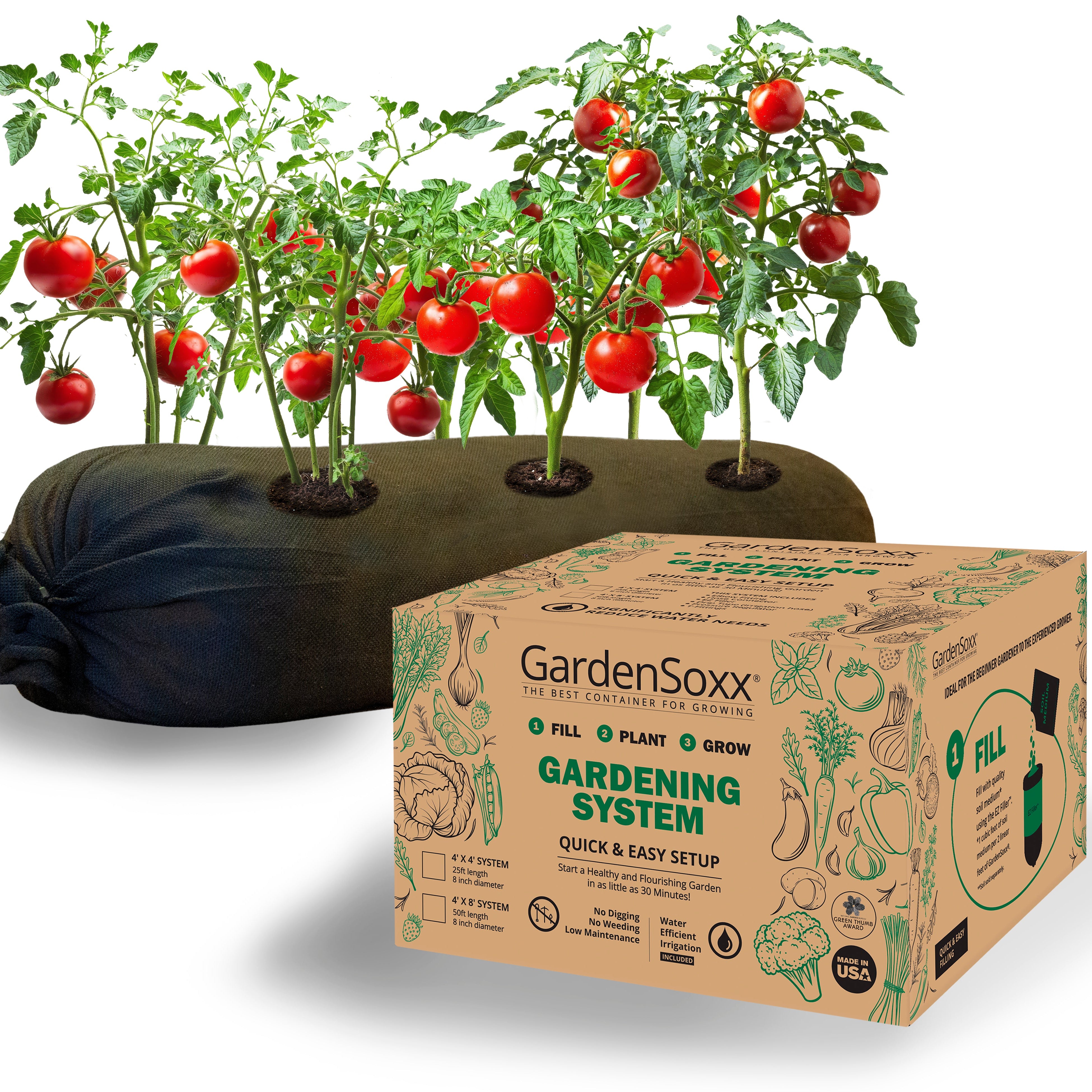Butternut Squash
If you are curious about how to grow Butternut Squash at home, you have come to the right place! Not only are they easy to grow, but also high in vitamins, minerals and full of antioxidants, they provide a boost in nutrition, supporting the immune system and helping to balance blood pressure.
A popular favorite of the winter squash varieties, Butternut squash is part of the cucurbit family. Their sweet and nutty flavor makes for an excellent roasted side dish or a silky soup that is reminiscent of the perfect autumn day. While they bring a lovely sweetness to savory dishes, they can also be used in baking recipes such as pies, breads and muffins as a substitute for pumpkin.

Growing butternut squash in GardenSoxx® | Plant Family: Cucurbitaceae
Different Varieties of Butternut Squash
With a few different varieties of Butternut Squash to choose from, you will surely find one best suited for your garden size and personal taste.
The Early Butternut is the quickest to grow from seed (about 80 days to full maturity). The fruit on this prolific variety is typically a consistent medium size and wider shape than some other varieties.
Taking a bit more time to mature (100 days or so), the Waltham Butternut is an easy-to-grow variety that stores very well over winter and is characterized by its deep orange flesh, and its ultra-rich, sweet flavor.
For smaller gardens, the Honeybaby variety offers a more compact-sized plant that produces an abundant harvest. The fruits themselves are a bit shorter than other varieties and have a flavorful, meaty flesh.
The Little Dipper variety produces smaller fruit overall that typically matures in a little over 100 days, and averages a weight of about 2 lbs. This variety prefers to vine and should be trellised to produce a higher squash yield.
Nutritional Information For Butternut Squash
Nutritional Facts - per 100/g
| Nutrient | Amount | % Daily Value |
|---|---|---|
| Calories | 45 | - |
| Total Fat | 0.1 g | - |
| Sodium | 4 mg | - |
| Potassium | 352 mg | - |
| Dietary Fiber | 2 g | - |
| Sugar | 2.2 g | - |
| Protein | 1 g | - |
| Vitamin C | - | 35% |
| Iron | - | 3% |
| Vitamin B6 | - | 10% |
| Magnesium | - | 8% |
| Calcium | - | 4% |
How to Grow Butternut Squash in Your GardenSoxx®
Butternut squash plants thrive in warm weather, and have a longer growing season than some other squash varieties. If you are in a colder growing zone, it is advisable to start seedlings indoors, hardening them off properly and waiting until all risk of frost has passed before transferring them outdoors. Acquiring seedlings from a nursery can save you some time and effort. While it isn’t necessary, growing butternut squash up a trellis can be beneficial for maximizing space in your garden and keeping the fruit off the moist ground where it risks rotting before it is ready to pick.
Butternut Squash Seed to Harvest Time: Approximately 115 days

How to Harvest Butternut Squash
Butternut squash should not be left on the vine during a fall frost as the fruit will risk being damaged. Pay close attention to the seasonal changes to know when the best time to harvest will be. When the vine stems dry up and begin to turn brown, and the skin of the squash is thick enough that it cannot be pierced by your fingernail, it is time to cut the fruit from the vine. Squash should be cured if they are going to be stored for longer periods of time. Keeping the stem on the squash will allow them to cure properly without the risk of rotting.


















































